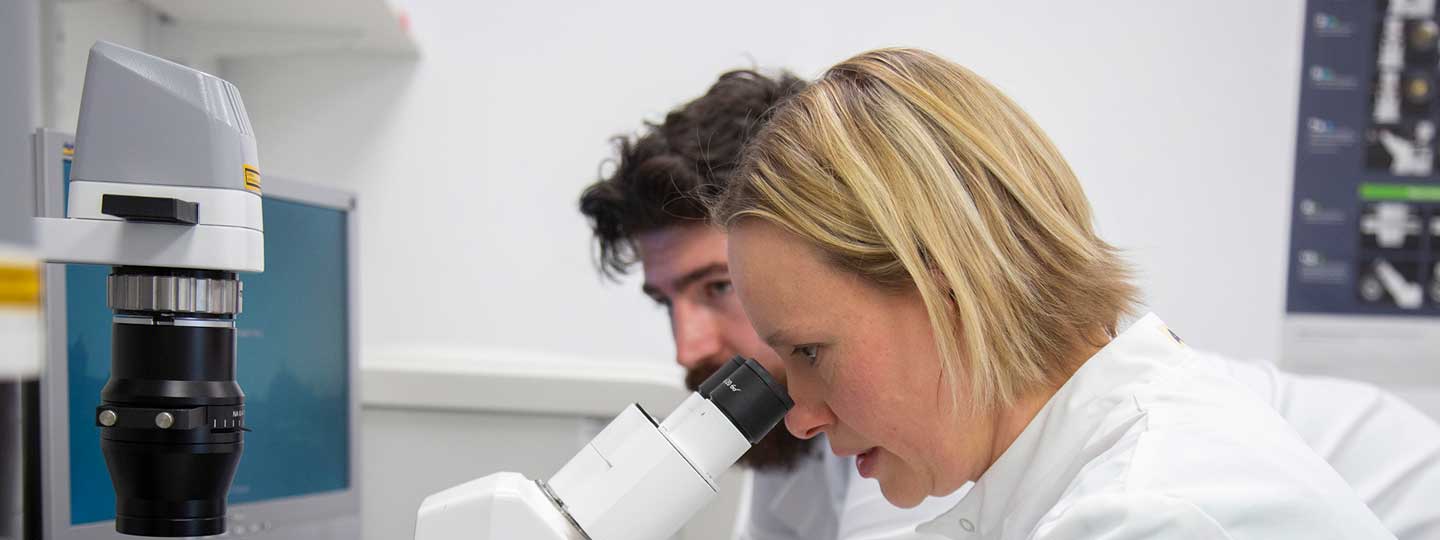How is our research centre tackling pain in arthritis?
12 March 2020
We know that pain disrupts how the body and the mind work. It can affect our appetite, our ability to sleep, how we think and move.
More than half of the 10 million people with arthritis say they experience pain every single day, and eight out of ten say they experience it most days.
The Pain Centre Versus Arthritis is one of the ways we’re taking on pain, bringing together healthcare professionals and researchers from different fields to answer some key questions:
- Why do people get arthritis pain?
- What’s the impact of pain on health and well-being?
- What makes arthritis pain worse?
Our researchers hope to answer these questions by better understanding the causes of pain in arthritis, as well as investigating the basic pathways of how we sense pain and the changes in the tissues caused by arthritis.
This research can help to develop new drugs to treat pain more effectively and use a more individual and targeted treatment approach.
Understanding how pain develops in arthritis
Researchers at the centre have developed methods to study how osteoarthritis pain develops in mice. They’ve identified mechanisms that are important in pain at different stages of osteoarthritis, helping them to understand similar events in humans.
They have also found that a specific protein (which is known to assist nerve survival in the brain) plays a specific role in arthritis pain. Identifying proteins that are important to arthritis pain may provide researchers with targets for new pain treatments in the future.
Targeting treatment for different types of pain
The research teams are also following a group of individuals over time after they first report knee pain, to understand how symptoms change after the start of arthritis pain.
The team have used joint imaging to look at any changes, measured patient-reported pain, as well as assessing their psychological health and engagement with wider society.
Results show that the progression of pain over time is different for different people, but there are subgroups of patients with similar pain experience.
Identifying subgroups of people might allow doctors to select specific treatments that are more likely to be effective for certain groups.
Developing better ways to assess pain
The centre is using a range of techniques (from questionnaires to ultrasound imaging) to improve the measurement of pain in people with arthritis. They have then gone on to study how changes to the joints (such as swelling of the joint lining) lead to increased pain processing by the nervous system (spinal cord and brain).
A questionnaire has been developed to help clinicians to identify those patients with osteoarthritis whose central nervous system plays a key role in their pain. This may help to highlight which treatment can best improve knee pain for different people.
Anxiety and pain
People’s experience of pain is influenced by psychological factors such as their emotional state (e.g. depression and anxiety).
Researchers at the centre have explored the connection between anxiety and pain, revealing it can make osteoarthritis pain more severe and widespread.
Anxiety can also alter the pain-relieving effects of opioid drugs. People with high anxiety and pain have been found to take more opioids but do not experience better pain-relief.
Find out more on about the centre and their research on their website.
Find the support you need
We’re here whenever you need us. If you want help, support or information – get in touch.
- Call our helpline on 0800 5200 520 (Monday to Friday, 9am to 6pm)
- Talk to our arthritis virtual assistant, 24/7
- Join our online community
- Follow us on Twitter, Facebook and Instagram.
You might also be interested in...
-
Genetics and genomics – how research is helping us to predict and treat arthritis
The Centre for Genetics and Genomics Versus Arthritis is looking at improving our understanding of the role of genetics in determining whether certain people are at risk of developing arthritis and what happens when they do.
-
“The pain meant I was losing so much”
Marianne took part in one of our clinical trials called ASCOT, which is exploring different options for treating damaged cartilage. The results of the surgery have been life-changing.